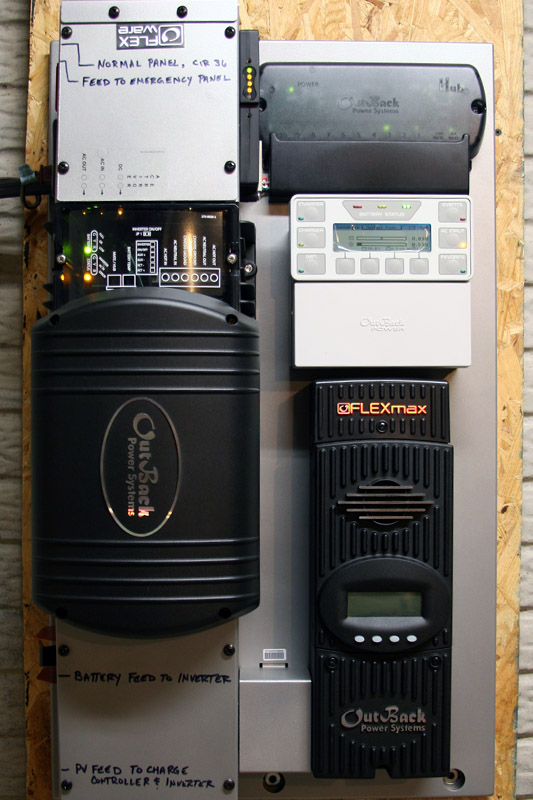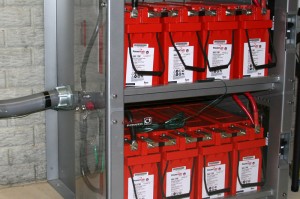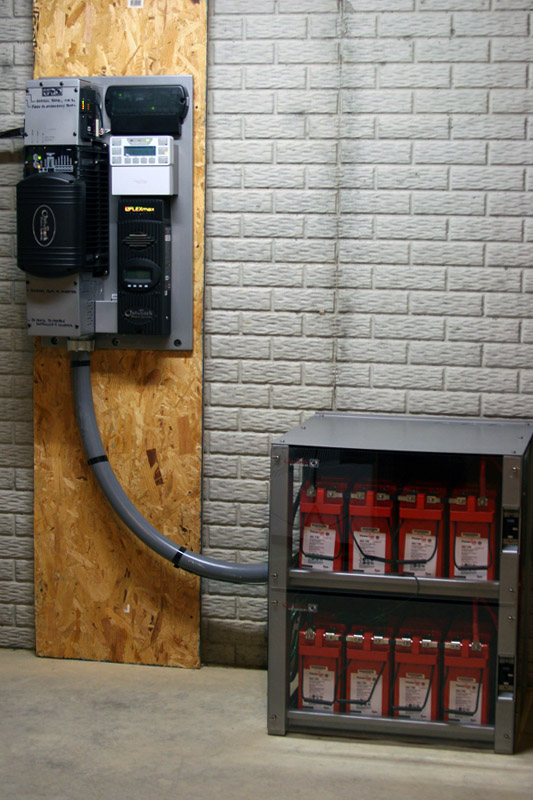Backup & Emergency Power Supplies
Comparing Advantages & Disadvantages of Backup/Emergency Systems
If you are in need of a backup/emergency power supply, a solar PV system could be a viable alternative. The following document talks about the advantages and disadvantages of both Solar PV and emergency generators as a backup power supply.
Emergency Generator
 An emergency generator in a residential application is usually sized to pick and carry the entire load of a home. In a commercial application these generators can be sized to pick up the entire load or a portion of the load of the facility. For example, hospitals have several systems which are powered by the emergency generator and are prioritized by importance.
An emergency generator in a residential application is usually sized to pick and carry the entire load of a home. In a commercial application these generators can be sized to pick up the entire load or a portion of the load of the facility. For example, hospitals have several systems which are powered by the emergency generator and are prioritized by importance.
Emergency generators come in sizes from very small portable units (3-5 kW) to very large industrial units (multiple MW). They are usually installed at the service point in a dwelling or commercial establishment and utilize a transfer switch to transfer the loads from the utility power source when needed. In homes they usually pick up the entire load and are designed to provide power as long as the commercial power is off to the facility. In commercial applications they can provide power for the entire facility but often provide power for an isolated set of loads, referred to as emergency loads.
Generators in residential applications are usually installed in weatherproof enclosures outdoors in general proximity to the normal power service entrance. Commercial and industrial sized generators can be indoor or outdoor depending upon the design, and are usually located at a convenient point both to the supply they will be providing power to and for visual appearance. Also, sound and exhaust dissipation is a factor for generator placement.
Most stand-alone generators these days are ‘smart’ units, which are self-monitoring. They have a weekly sequence where they start up, pick up the load, monitor their progress, and shut down. They give you signal when they are not operating correctly, just like the computer in your car. Like any other motor-driven system, they require periodic maintenance.
Advantages
- Can power entire homes or facilities
- Provide power as long as the outage is required (presuming natural gas or diesel fuel is available)
Disadvantages
- Burns hydrocarbon fuels (natural gas or diesel), contributing to global climate change. This happens during both emergency generator operations and weekly or monthly unit exercising.
- Visual appearance of the unit—about the size of an air conditioner condenser or larger on the exterior of the building.
- Is loud when operating.
- In some applications the exhaust needs to be routed to an appropriate location.
- If it is diesel, the fuel supply needs to be cycled periodically (annually) to keep it ‘fresh’.
- Cannot be used for offset utility power (except in specific industrial design applications).
- Warranties on equipment are usually 1 year.
- Takes 8-10 seconds to ‘spin up’ and be ready to accept the load. During that period the building will be without power.
Ideal Applications
- Larger loads (such as a whole home or business)
- Loads that are required to be on for an indefinite period.
Cost
- Installed cost for a backup generator, transfer switch and interconnection (including fuel feed) varies between $ 0.50 and $ 1.50 per watt for many installations.
- Return on investment: none.
Battery Backup Solar Power Systems
 Solar power systems with battery backup have an advantage in applications where the amount of power needed is limited. Battery systems have limited capacity in emergency situations, based upon the capacity of the battery bank. These systems are backed up by the solar PV system, which provides power to keep these batteries charged.
Solar power systems with battery backup have an advantage in applications where the amount of power needed is limited. Battery systems have limited capacity in emergency situations, based upon the capacity of the battery bank. These systems are backed up by the solar PV system, which provides power to keep these batteries charged.
Fortunately, major storm events are often accompanied by a storm front which goes through a region, and the weather pattern behind it is often clear, providing solar power production to backup an emergency battery system.
Battery banks and solar production are sized based upon the loading which needs to be served and the amount of time that the systems needs to operate without utility power, called ‘ride through’.
As these systems are grid-tied under normal operation, the solar power production can be utilized to offset normal power production, thus saving money. These systems have many solar components which are rated for 25 years, batteries are usually limited to 5 year life cycle.
Advantages
- Usually provides limited amounts of power.
 Power production can be augmented by solar power system if solar resources are available.
Power production can be augmented by solar power system if solar resources are available.- Uses renewable sources of power and does not contribute to global climate change.
- Makes very little noise when operating.
- Can be backed up by an emergency generator.
- Components are often warranted for 2-5 years, solar panels for 25 years.
- Transfers the load to battery powered inverter power within fractions of a second.
Disadvantages
- Power production is limited to the battery backup reserve plus solar generation.
- Requires an indoor location for the solar panels and battery system.
- Often requires rewiring of critical loads into an emergency panel.
Ideal Applications
- Smaller or limited loads
- Computer backups and uninterruptible power supply (UPS) applications.
Cost
- Installed cost for a solar PV power system with battery backup varies between $ 5.00 and $7.00 per watt for many installations. Pricing depends significantly upon the amount of power and time required for ‘ride through’ in the absence of solar PV.
- 30% tax credits are available through 12/31/16.
- 50% accelerated depreciation is available for corporate expenditures through 12/31/14.
- Return on investment: 15 to 20 years at current utility rates.
Additional Resources:



